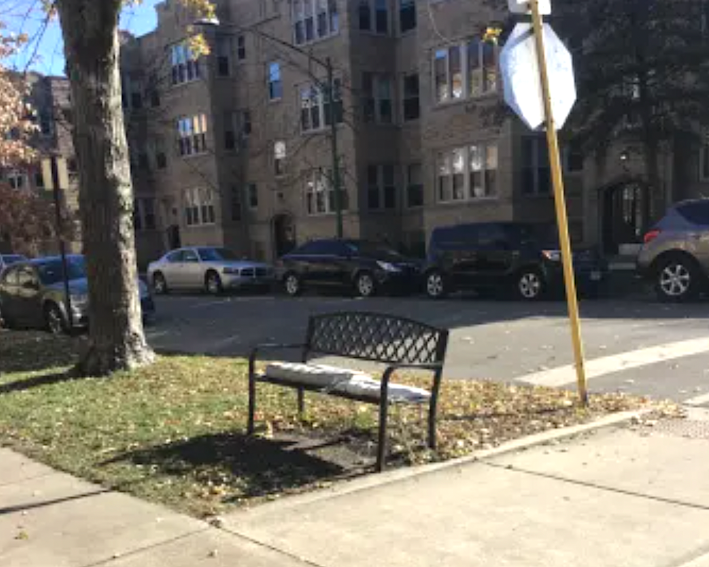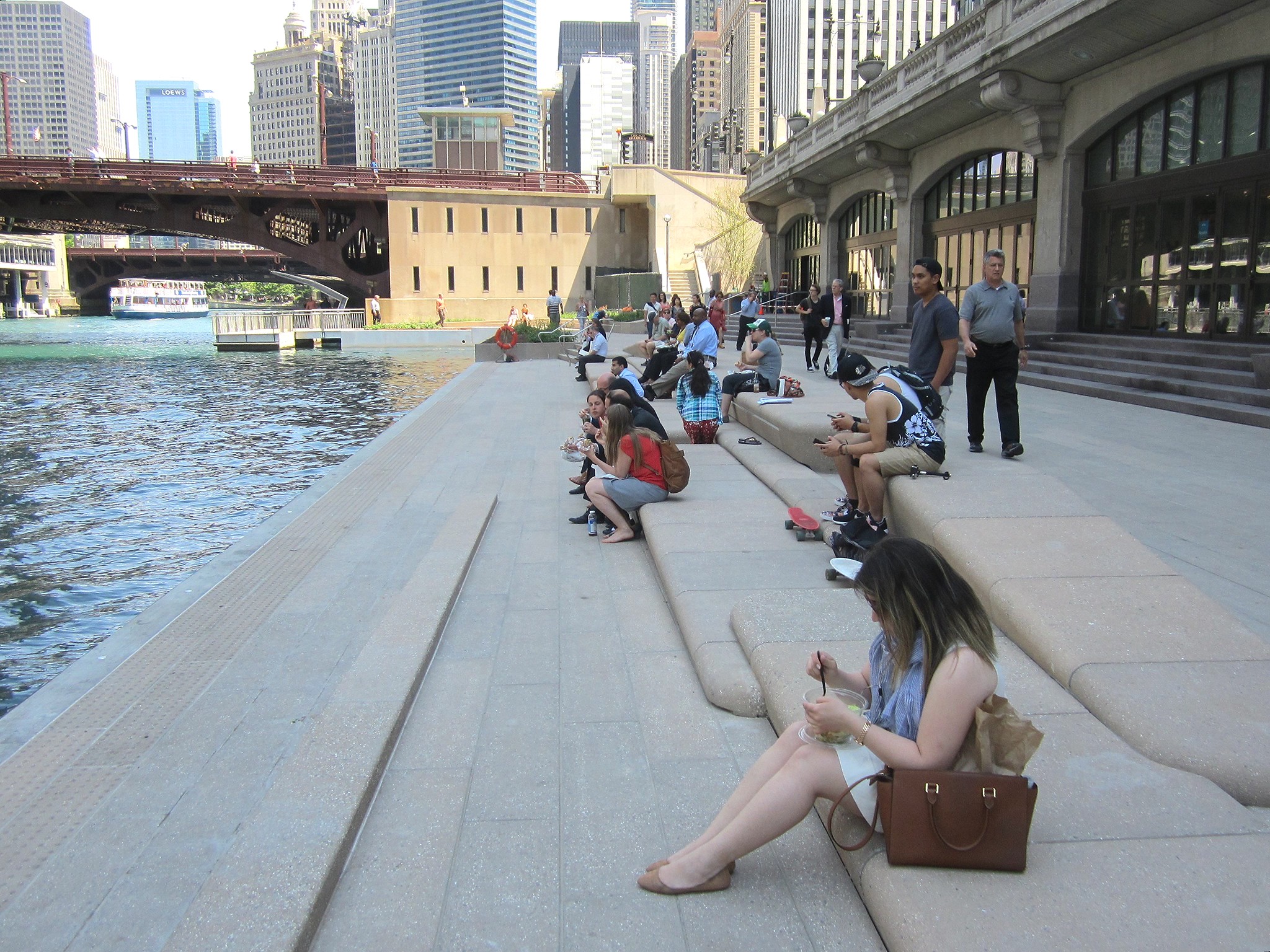While writing my recent piece about the lack of public restrooms in Chicago, I also thought of the lack of high-quality public seating in Chicago. This isn’t a new thought. Over the summer I wondered if part of why we see such large numbers of people driving to the lakefront is due to the guarantee that they will have somewhere to sit, either in their car or in chairs they brought from home. Chairs can be transported by bike – it's actually pretty easy to strap a small beach chair onto the rack of a bicycle with panniers – but this doesn’t take into account hostile cycling conditions while accessing the lakefront. Additionally, people shouldn't have to bring their own seating to enjoy public spaces. The lack of public seating in Chicago also detracts from our city’s reputation for livability and hospitality.
As I researched this topic, article after article noted that quality public seating is crucial to creating a welcoming public space and activating street life. I first came across the Social Life Project whose mission is to highlight what makes public spaces thrive. According to SLP, seating makes a strong statement about whether you are welcome in a space or not. My sense is the lack of comfortable public seating in Chicago is about discouraging unhoused individuals from spending time in public. This is very short-sighted. I would bet good money that if Chicago decided to invest in more, better-quality public seating, this would be popular among residents and visitors.
There are numerous examples that Chicago can learn from when it comes to public seating. New York City has the CityBench program which has brought over 2,100 benches to the city. According to the program’s website, the goal of the program is to make NYC’s streets more comfortable for all New Yorkers, especially pedestrians and transit riders.
I initially found the website through a World Health Organization initiative, “Age Friendly World” which catalogs age-friendly initiatives in cities. Public seating makes our cities more accessible to the elderly by recognizing elderly individuals may be unable to walk long distances without stopping to rest and by offering the opportunity for social interaction. The elderly are the most socially isolated across age groups and our built environment plays a role. There's also the connection between urban design that provides mental health benefits and design that worsens it. Providing opportunities for social interaction in public space can foster social connection in ways social media and technology cannot.

Portland’s “street seat” program offers inspiration for Chicago’s streets. In an 2017 interview with BBC on the topic of public seating, then Director for Portland Bureau of Transportation Leah Trent shared that community engagement was key to the popularity of Portland’s street seats.“There's a great culture here in Portland of embracing streets as public space," Treat said.
Santa Monica, CA rolled out seating for its Big Blue Bus transit system. I can imagine this type of seating at Chicago bus stops and in residential areas. You can see more examples from the Los Angeles area in this Curbed article profiling LA's street furniture.
Testing out Santa Monica's bus stops for a story on street furniture. Does your city take good care of its riders? pic.twitter.com/eiLXyLHh08
— Alissa Walker (@awalkerinLA) July 15, 2016
I want to see more “sticky” public spaces in Chicago. Urban planner Brent Todarian popularized the term “sticky” to describe places where people want to stay and linger. Without seating, public spaces are just a place to pass through. There's one public space in Chicago that bucks the trend of being a place to pass through. The Chicago Riverwalk is somewhat of a sticky place with its public seating and there’s also room to improve the public realm surrounding the area. I would love to see public seating, interactive art, and more along Michigan Ave and State St and in our neighborhoods.
Paris is hailed as a city to follow when it comes to public seating in the Social Life Project blog. I can imagine this type of seating in our public parks and along high pedestrian traffic areas.
Seating is Fundamental City Infrastructure: The Proof is in Paris 🇫🇷
— Jonathan Berk (@berkie1) March 26, 2021
"Without seating, public spaces become mostly pass-through destinations."https://t.co/hyHrfUDfDg pic.twitter.com/ISkOfCJdvu
Streetsblog editor-at-large Steven Vance recently noted that, conversely, when no public seating is available, it discourages people from spending time in public space.
It would be great if there was a bench here so you can wait for your friends outside in the gorgeous fall evening - my Flickr: https://t.co/U58mhQkeqQ pic.twitter.com/VrSqSsyYLk
— Steven (@stevevance) October 20, 2021

Some Chicagoans are taking it into their own hands to fill in the seating gap in their neighborhoods. I spotted this bench at Argyle and Winchester. I would love to know what inspired someone to place the bench there.




